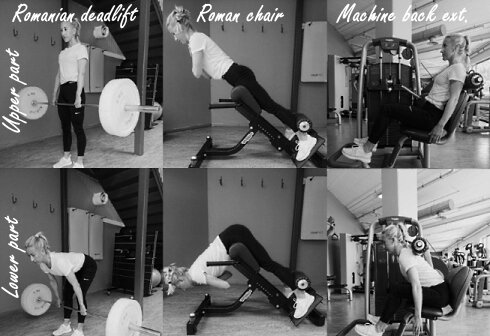Why you should include the hyperextension in your workouts
In many gyms, the hyperextension has a bit of a therapeutic image. If you do this exercise, it is because your physical therapist has advised you to. But real members of the iron tribe who do not need a physiotherapist, of course, do not do the hyperextension. They are going to deadlift. Yes right? Thought wrong, Norwegian sports scientists discovered.
Study
Vidar Andersen, of the Western Norway University of Applied Sciences, in the Journal of Sports Science and Medicine, compared the effects of the hyperextension [using the term Roman chair extension] with those of the Romanian deadlift and the machine back extension.
Andersen had the exercises performed by 15 female students, who had been training with weights for quite some time, with a load with which 6 reps were possible. He stuck electrodes on the subjects' bodies so that he could see how hard muscles such as the erector spinae, the biceps femoris or the gluteus maximus had to work during the upper and lower part of the movement.
Results
The figure below shows the activation of the muscle groups. Of these three exercises, the hyperextension appears to provide the best stimuli for the muscle groups. The Romanian deadlift comes in second.
Practical application
"For athletes and recreationally active people aiming to optimize the neuromuscular activation of the glutes and hamstring, we would particularly recommend the Roman chair exercise", writes Andersen.
"This exercise was in general more effective in activating these muscles, likely due to the biomechanical properties of the exercise creating a consistently large torque throughout the whole range of motion, and particularly in the upper part. It is also easier to perform with proper technique than the Romanian deadlift."
"Machine back extension was clearly inferior to the other two exercises."
Honor the deadlift
That's not to say Andersen thinks serious athletes should forget about the Romanian deadlift. The exercise certainly has its qualities.
"The Romanian deadlift maximizes its torque in a flexed hip position", Andersen continues. "As the hip is extended, the torque continuously decreases, allowing for increased velocity. These biomechanics would simulate running, and especially the top speed phase, where the hip torque is greatest in the late swing phase where the hip is flexed."
"Therefore, we recommend athletes and recreational trained to consider the purpose of the exercises before choosing which one to include in their weekly resistance-training program."




